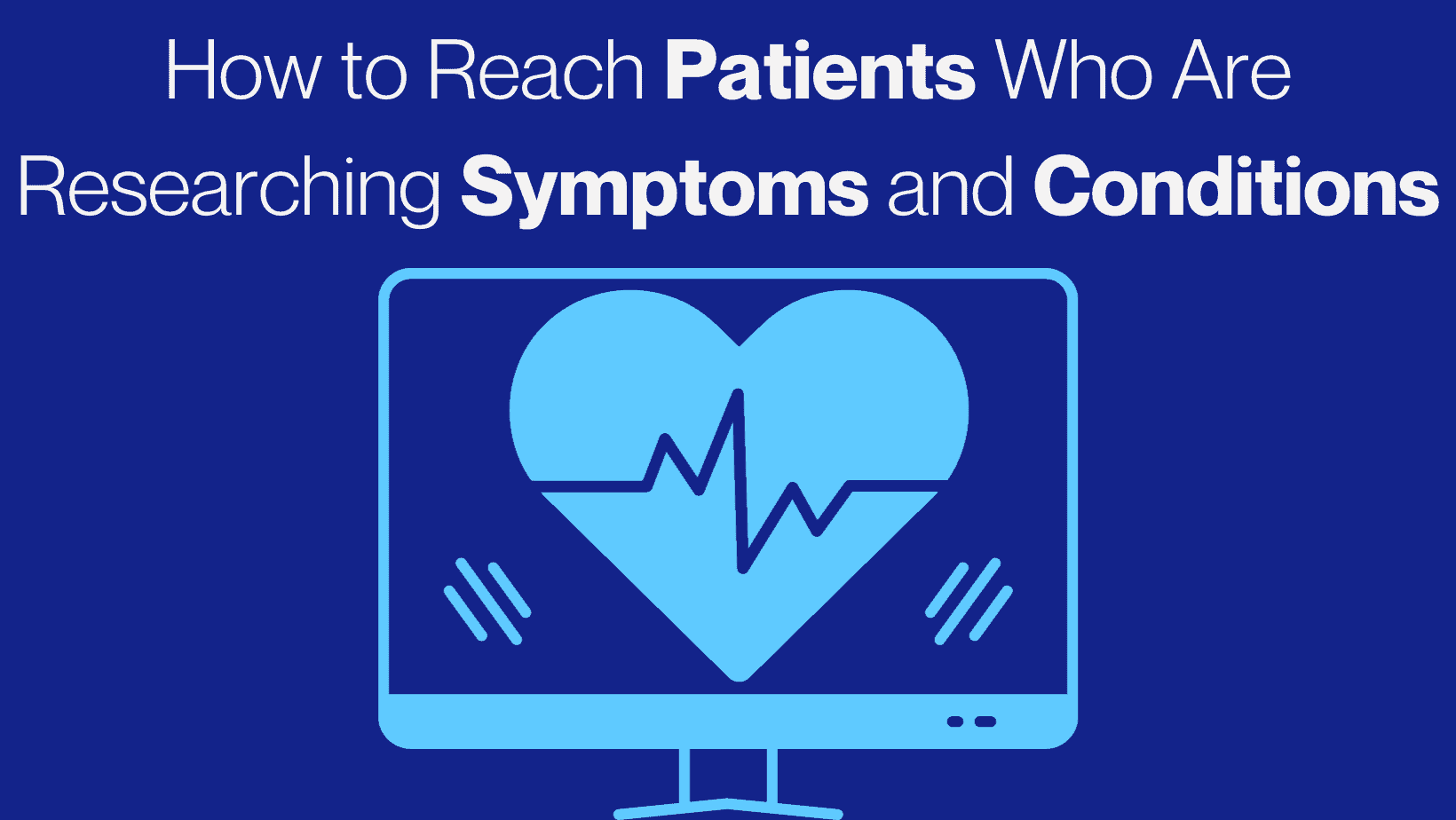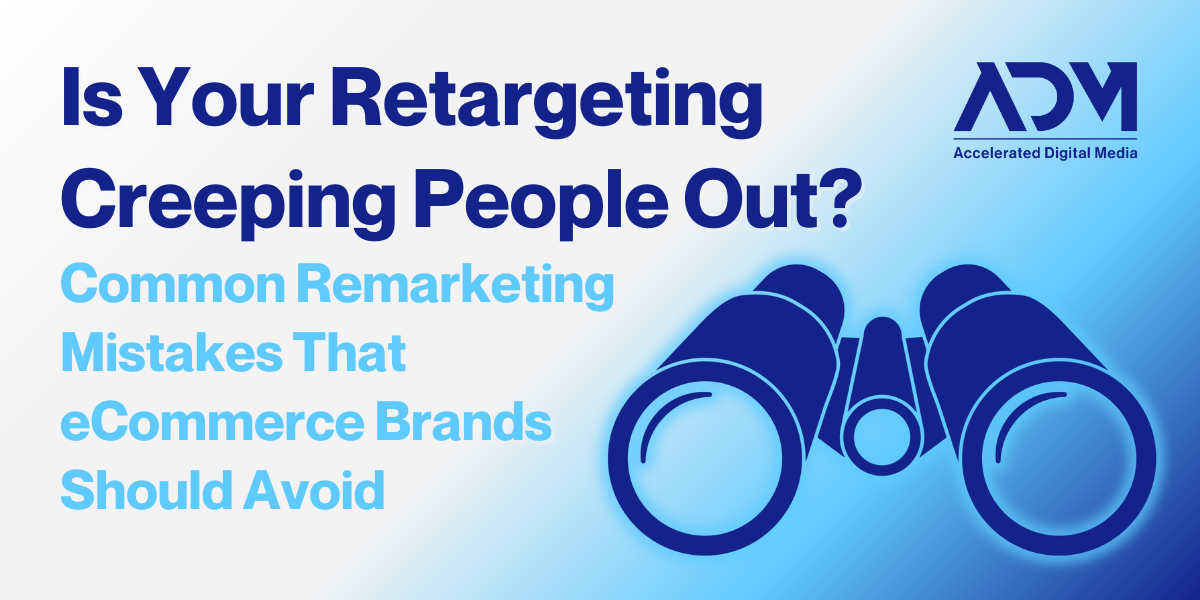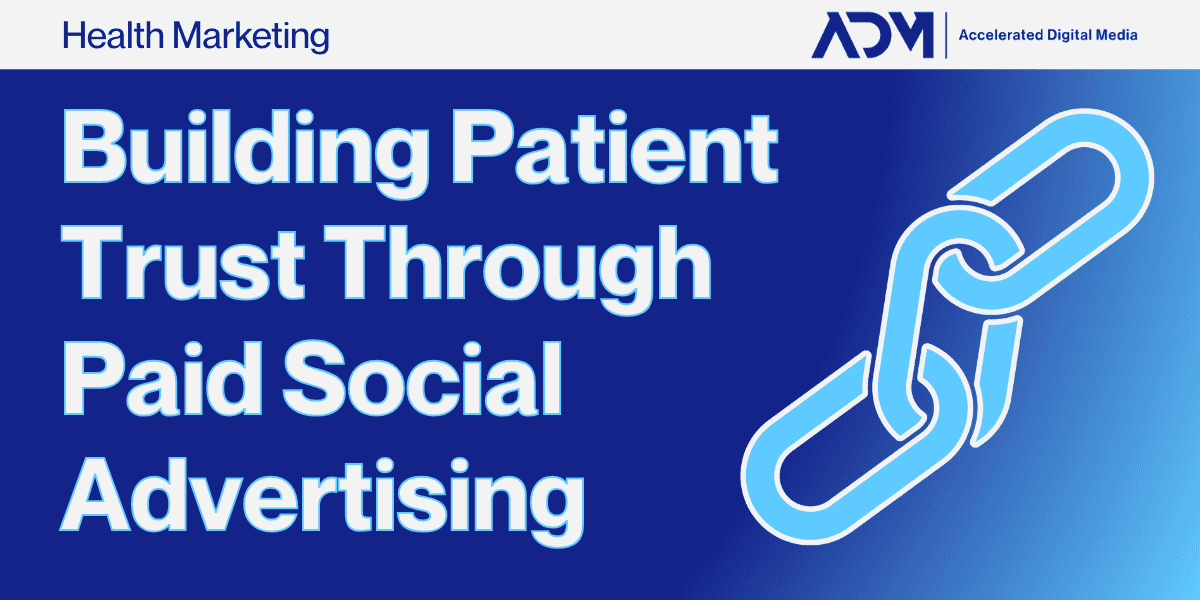For healthcare companies, patient acquisition is paramount, but it’s also a huge challenge. Marketing to patients is a very different proposition than marketing to “shoppers” or “customers.” Patients have specific, sensitive needs and need to be met with information and empathy. Meanwhile, healthcare companies are also bound by specific platform rules and legal policies that limit the ways that techniques they can use when marketing online.
At ADM, performance marketing for healthcare is one of our specialties. We know the intricacies of health marketing, which is why we put together a guide on mapping the patient journey to the marketing funnel. In this blog, we’ve condensed some key points from the first part of that eBook to help you find new cross-channel ways to reach patients early in their search for care.
The Two Sides of the Research Phase
Understanding and effectively engaging prospective patients in the research phase is a cornerstone of successful digital marketing for healthcare companies. This phase is bifurcated into two crucial segments: before diagnosis, when patients are experiencing symptoms but lack a formal diagnosis, and after diagnosis, when they have linked their symptoms to a medical condition.
Tailoring digital advertising strategies to these distinct stages is imperative for creating meaningful connections and guiding patients on their healthcare journey. In this blog, we’ll look at what health brands can do through paid search, social media, and programmatic advertising to boost their patient acquisition efforts.
Tips for Reaching Patients Who are Researching Symptoms
Search Engine Marketing
In the pre-diagnosis phase, patients are grappling with symptoms and seeking answers. Crafting custom campaigns that target symptom-related keywords is vital. Language is key – it must align with how patients describe their symptoms rather than using technical jargon. The aim is to educate and guide them towards considering appropriate healthcare steps.
- Target Symptom-Related Keywords: Bid for keywords associated with symptoms to ensure your campaigns resonate with patients’ descriptions of their health issues.
- Create Landing Pages that Educate and Encourage: Develop landing pages that are informative, encouraging, and user-friendly, providing insights into symptoms, potential conditions, and the importance of seeking professional guidance.
- Example: Employ YouTube ads targeting videos on “improving skin redness” and linking them to landing pages with educational content about skin conditions.
Paid Social
Engaging with prospective patients empathetically is crucial at this stage. While direct targeting based on health information might not be possible due to regulations, demographic targeting allows for reaching the intended audience. Creating awareness and empathy through compelling ad creative is essential.
- Engage with Empathy: Develop campaigns that resonate with the target audience by focusing on empathy and understanding. Utilize relatable content and genuine storytelling.
- Offer Patient Resources: Provide educational resources directly on social platforms, including health assessments, infographics, blog posts, and videos that address common symptoms and potential conditions.
- Example: Utilize user-generated content to make ads relatable, ensuring patients feel supported and understood in their health concerns.
Programmatic Advertising
Utilizing programmatic advertising, specifically contextual keyword programmatic advertising, can effectively reach audiences based on their search intent. This approach builds awareness and facilitates early engagement, offering insights to patients contemplating seeking medical consultation.
- Reach Audiences Based on Search Intent: Leverage contextual keyword programmatic advertising to connect with users actively searching for information related to their symptoms and potential conditions.
- Example: Target keywords like “self-help” to connect with audiences committed to self-improvement and well-being through display or video ads.
By integrating these targeted digital advertising strategies during the early research phase before diagnosis, healthcare companies can not only educate and inform prospective patients but also establish trust and credibility, ultimately guiding them towards appropriate healthcare solutions.
Tips for Reaching Patients After Diagnosis
SEM
After a diagnosis, patients are seeking comprehensive information about their condition, potential treatment options, and the implications on their life. Tailoring search engine marketing to address these specific needs is crucial.
- Target Condition-Related Keywords: Bid for keywords related to specific medical conditions, focusing on providing in-depth information and potential treatment options.
- Build Custom Landing Pages that Highlight Expertise: Develop highly specialized landing pages that provide comprehensive information about the condition, treatment options, and what to expect in living with the condition. Utilize social proof, such as patient testimonials and case studies, to establish credibility.
- Example: Customize landing pages to address each targeted condition or treatment, integrating patient testimonials and reviews to build trust.
Paid Social
At this stage, patients may be overwhelmed and uncertain about their condition and treatment options. Providing educational resources through social media campaigns can alleviate their concerns and empower them with the knowledge they need to make informed decisions.
- Maintain Your Empathetic Approach: Continue engaging with the audience empathetically, offering support and understanding. Utilize relatable content to build a connection with patients in this critical phase.
- Provide Deeper Resources: Deliver educational resources directly on social platforms to equip patients with information about their condition, treatment options, and potential lifestyle changes.
- Example: Develop social media campaigns that offer a range of educational materials, including infographics, videos, and blog posts, to provide comprehensive insights into the condition and available treatments.
Programmatic Advertising
Utilizing programmatic advertising after diagnosis involves building patient personas to precisely reach the target population. Understanding their concerns, interests, and potential lifestyle changes can inform targeted campaigns.
- Build Patient Personas to Reach Your Target Population: Utilize programmatic advertising to create patient profiles for those recently diagnosed. Understand their concerns, interests, and lifestyle changes prompted by their diagnoses to tailor advertising messages effectively.
- Example: Leverage healthcare-specific demand side platforms (DSPs) like PulsePoint to connect with patients researching their health needs with high intent.
Marketing Made for Healthcare
Incorporating these targeted strategies during the early research phase after a diagnosis allows healthcare companies to provide valuable information and support, differentiating their business and guiding individuals towards appropriate healthcare solutions and treatments.
By aligning advertising efforts with the evolving needs and inquiries of patients during their healthcare journey, healthcare marketers can effectively bridge the knowledge gap and empower individuals to make informed decisions about their health. These strategies not only enhance brand visibility but also contribute to fostering a sense of trust and credibility among prospective patients, thereby ultimately improving healthcare outcomes.
Unlock the full eBook below for tips on how to reach patients throughout their entire journey. If you have more questions about effective, compliant healthcare marketing, don’t hesitate to reach out to our team today.



